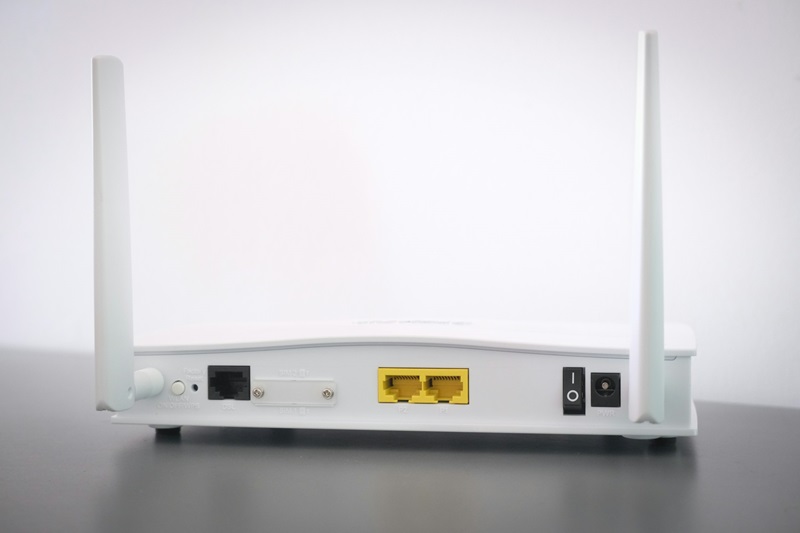Looking for a way to stay connected while traveling? Wondering if you can use your own modem in a hotel?
If you’re short on time, here’s a quick answer to your question: Yes, you can use your own modem in a hotel. However, there are some limitations to consider.
In this article, we will explore the benefits of using your own modem, discuss the steps to set it up in a hotel, and provide some tips for troubleshooting common issues.
Whether you’re a frequent traveler or planning your next vacation, this guide will help you stay connected and make the most out of your hotel internet experience.
Benefits of Using Your Own Modem
Faster and More Reliable Connection
One of the primary benefits of using your own modem in a hotel is the potential for a faster and more reliable internet connection. Many hotels offer Wi-Fi services to their guests, but the speed and reliability of these connections can vary greatly.
By using your own modem, you can bypass any potential limitations or congestion on the hotel’s network and enjoy a more consistent and high-speed internet experience. This is especially beneficial for business travelers or individuals who rely on a stable internet connection for streaming, video conferencing, or other data-intensive activities.

Enhanced Security
Using your own modem also provides an additional layer of security for your internet connection. When you connect to a hotel’s Wi-Fi network, you are sharing the same network with other guests, which can potentially put your personal information at risk.
By using your own modem, you create a separate and secure network for your devices. This reduces the chances of unauthorized access to your data and minimizes the risk of falling victim to cyber attacks or identity theft.
Cost Savings
Another advantage of using your own modem in a hotel is the potential cost savings. Some hotels charge a daily or hourly fee for Wi-Fi access, and these charges can quickly add up, especially for longer stays.
By using your own modem, you can avoid these additional costs and enjoy unlimited internet access without any extra charges. Additionally, investing in your own modem can be a long-term cost-saving strategy if you frequently travel and stay in hotels, as you won’t have to rely on paid Wi-Fi services in each location.
Setting Up Your Own Modem in a Hotel
Are you tired of relying on slow and unreliable hotel Wi-Fi? Using your own modem in a hotel can be a game-changer when it comes to internet connectivity.
In this comprehensive guide, we will walk you through the process of setting up your own modem in a hotel, so you can enjoy fast and secure internet access throughout your stay.
Check Hotel Policies and Compatibility
Before packing your modem, it is important to check the hotel’s policies regarding the use of personal modems. Some hotels may have restrictions or additional charges for using your own equipment.
Additionally, ensure that your modem is compatible with the hotel’s network infrastructure. Most hotels use Ethernet connections, so make sure your modem has an Ethernet port.
One useful website to check for compatibility is Hotels.com, where you can find information about hotel policies and amenities.
Pack the Necessary Equipment
When packing for your trip, don’t forget to bring the necessary equipment for setting up your own modem. Here’s a checklist:
- Modem: Choose a modem that is compact and easily portable.
- Ethernet Cable: Pack an Ethernet cable of sufficient length to connect your modem to the hotel’s Ethernet port.
- Power Adapter: Ensure you have the appropriate power adapter for your modem.
- Documentation: Bring any user manuals or setup guides that came with your modem, just in case you need to refer to them.

Connect and Configure Your Modem
Once you have arrived at the hotel and unpacked your equipment, it’s time to connect and configure your modem. Follow these steps:
- Connect the Ethernet cable: Plug one end of the Ethernet cable into the Ethernet port on the modem and the other end into the Ethernet port in your hotel room.
- Power up the modem: Connect the power adapter to the modem and plug it into a power outlet. Wait for the modem to power up and establish a connection.
- Configure the modem: Access the modem’s configuration settings through a web browser on your device. Follow the manufacturer’s instructions to set up the modem for your specific hotel network. This may involve entering login credentials provided by the hotel.
- Test the connection: Once the modem is configured, test the internet connection on your device to ensure everything is working properly. You should now have your own secure and reliable internet connection in the hotel!
Remember to follow any hotel guidelines and rules while using your own modem, and enjoy the benefits of a faster and more reliable internet experience during your stay.
Troubleshooting Common Issues
No Internet Connection
One of the most common issues when using your own modem in a hotel is the lack of internet connection. If you find yourself in this situation, there are a few steps you can take to troubleshoot the problem.
- Check your modem’s connection: Make sure that all the cables are securely plugged in and that there are no loose connections.
- Restart your modem: Sometimes, a simple restart can fix connectivity issues. Unplug your modem from the power source, wait for a few seconds, and then plug it back in.
- Contact the hotel’s IT support: If the above steps don’t work, it’s a good idea to reach out to the hotel’s IT support team. They may be able to provide you with additional troubleshooting steps or check if there are any network issues on their end.
Weak Signal Strength
Another common issue that you may encounter when using your own modem in a hotel is weak signal strength. This can result in slow internet speeds or even intermittent connectivity. Here are a few tips to improve your signal strength:
- Position your modem correctly: Place your modem in a central location in your room, away from any obstructions such as walls or large furniture.
- Adjust the antenna: If your modem has an adjustable antenna, try different positions to find the one that provides the strongest signal.
- Upgrade your modem: If you frequently travel and rely on your own modem, consider investing in a modem with better signal strength or one that supports multiple frequency bands.
Modem Compatibility Issues
When using your own modem in a hotel, compatibility issues can sometimes arise. This is especially true if the hotel has outdated or incompatible network infrastructure. Here’s what you can do:
- Check if your modem is compatible: Before traveling, check the hotel’s website or contact their IT support to find out if they have any specific requirements or restrictions for using your own modem.
- Update your modem’s firmware: If your modem is compatible but still not working, check if there are any firmware updates available. Updating the firmware can often resolve compatibility issues.
- Consider using a different modem: If all else fails, you may need to consider using a different modem that is known to be compatible with the hotel’s network.
Remember, every hotel’s network setup can be different, and it’s always best to reach out to their IT support for assistance.
By following these troubleshooting steps, you’ll increase your chances of successfully using your own modem in a hotel and enjoying a reliable internet connection throughout your stay.
Tips for a Smooth Experience
Update Firmware and Drivers
Before connecting your own modem in a hotel, it is essential to ensure that both the firmware and drivers are up to date. Firmware updates often include important security patches and bug fixes, while updated drivers can improve compatibility and performance.
You can usually find the latest firmware and drivers on the manufacturer’s website. Make sure to follow their instructions carefully during the update process.
Secure Your Network
When using your own modem in a hotel, it’s crucial to take steps to secure your network and protect your personal data.
One of the first things you should do is change the default login credentials for your modem. Use a strong, unique password that includes a combination of letters, numbers, and special characters.
Additionally, it is recommended to enable encryption on your Wi-Fi network to prevent unauthorized access.

Keep Technical Support Contacts Handy
Even with the best preparations, technical issues can still arise when using your own modem in a hotel.
To ensure a smooth experience, it’s a good idea to keep the contact information for your modem’s technical support readily accessible. This way, if you encounter any connectivity or configuration problems, you can reach out to them for assistance.
If you are unable to resolve the issue on your own, contacting the hotel’s IT support team can also be helpful. They may be able to provide specific instructions or troubleshoot any network-related problems.
Remember, by following these tips, you can have a seamless and secure experience when using your own modem in a hotel. Enjoy high-speed internet access and stay connected throughout your stay!
Conclusion
In conclusion, using your own modem in a hotel can offer several advantages, such as faster and more reliable internet connection, enhanced security, and potential cost savings.
By following the steps outlined in this guide, you can easily set up your own modem and enjoy a seamless internet experience during your hotel stay.
Remember to troubleshoot common issues and implement best practices for a smooth and secure connection.
So, next time you travel, don’t forget to pack your own modem and stay connected wherever you go!






